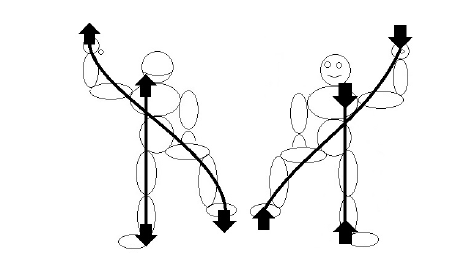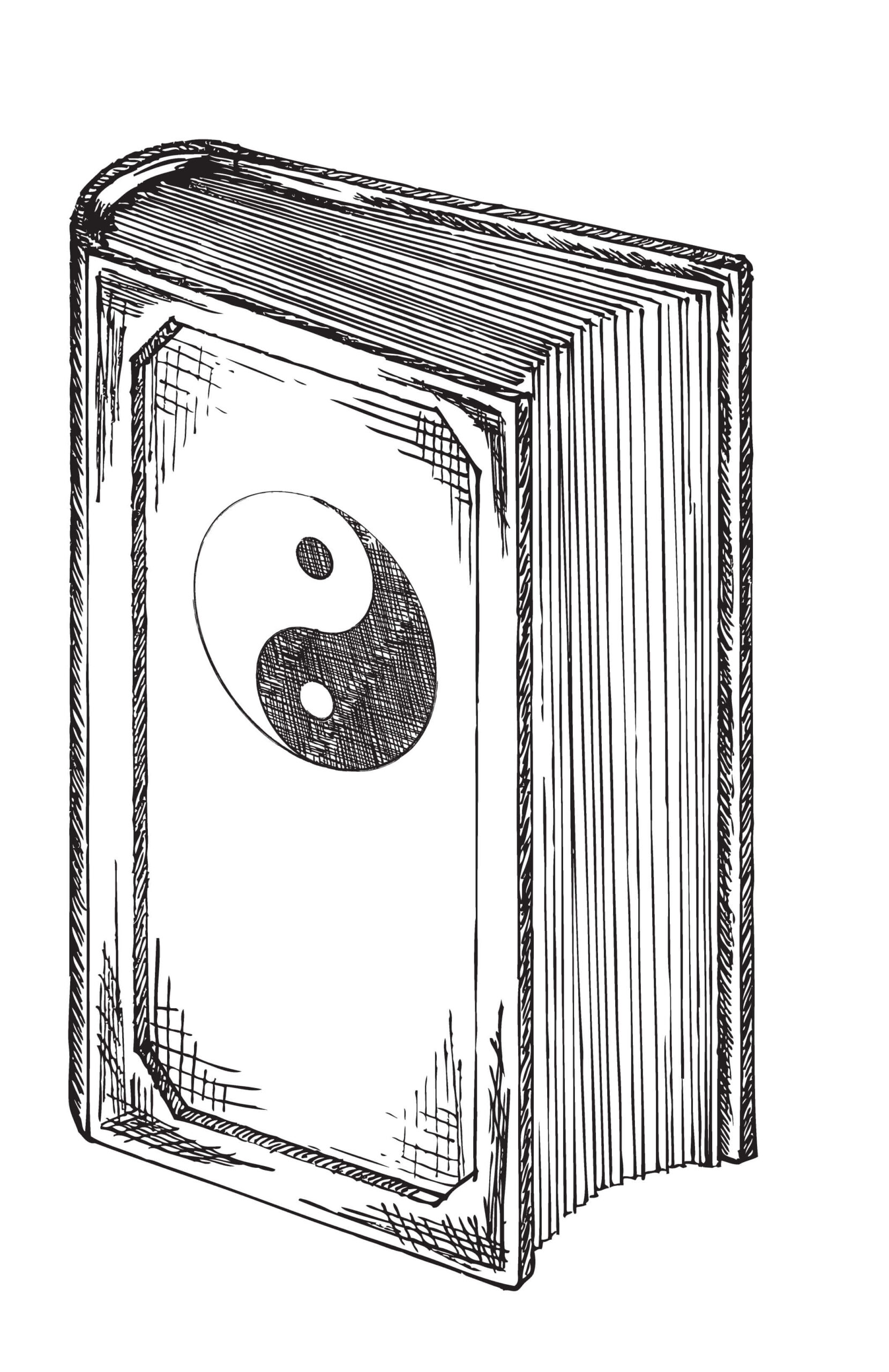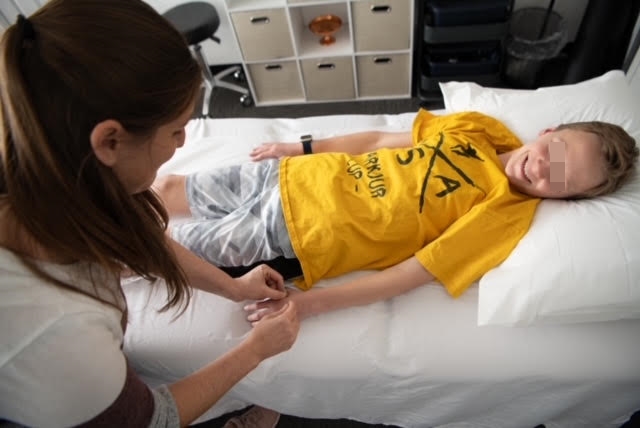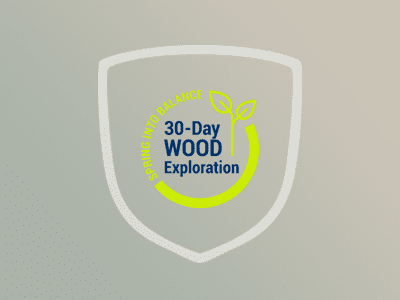Updating Moxa Points
by Felip Caudet
This article was first published by the North America Journal of Oriental Medicine, NAJOM Volume 22 Number 63, March 2015, and is republished here with permission
Goto Konzan (1659-1733), a physician in the Edo period and founder of the Kohoha (Classic Medicine Faction) school of thought, in his theory of the stagnation of qi noted: “All disease comes with qi
stagnation, but it is not a stagnation of essential qi. It is stagnation of a certain kind of qi, refined and exquisite, that provides the life of all beings and contains the yin and yang aspects itself. It is the qi.”
This idea is the basis of our definition of a live point – that is to say, an ideal point for the application of okyu – formally developed in 1985 and widely used by people who work with Fukayakyu-ho (Fukaya’s style of moxibustion). Throughout his life, moxibustion master Fukaya Isaburo (1901-1974) developed various concepts to define moxa points. In his book Yoku kiku, okyu no katei ryoho hiketsu (1938), Fukaya Sensei used Attsu ketsu (pressure pain points) and linked this concept with Head’s Zones.1 He also used hikon or hikai, a common concept among Okyuya-san (people who performed moxibustion), which refers to the small lumps in moxa points that we can feel with our fingers. In the 1960s, a new concept was introduced in Japan – trigger points. Fukaya Sensei, always open to new developments, studied this and later began to use the Japanese term kouketsu (induration). Fukaya Sensei first used this term in his book Kyu ni yoru chiryou-ho (Kyu ryogi Vol 1,1965). At that time, the concepts of attsu ketsu and kouketsu were not popular among Okyuyasan. This is perhaps because many Okyuya-san did not believe such concepts were necessary (a popular idea at the time!). Others concepts such as han-nou (reactive), iwakan (to feel something strange), attsu-kouketsu (painful indurated reactivity) were also well explained and developed by the master.2
Nowadays, in Fukaya-style moxibustion, we define moxa points – points suitable for moxibustion – as (1) those that are indurated (kouketsu: stagnation of qi, blood, muscle and/or fascia), (2) those that are painful when pressed (attsu-ketsu), and (3) those that move (keiketsu wa iddou suru). The initial development of moxibustion by Fukaya Sensei was through classics like Meikakyusen by Asai Nanko and Aze-youketsu by Okamoto Ippo, books dedicated to moxibustion and application points. Master Fukaya later developed, through his great clinical experience, many unknown or hidden aspects of these texts. Many of the concepts developed by Fukaya Sensei referred to finding useful moxa points, either by specific hand palpation techniques or by using tools, such as string. Fukaya’s developments support the notion of applying moxa exclusively on live points (indurated, reactive, and movable) regardless of diagnostic assessments of deficiency or excess. Classically, moxibustion points were categorized as regular acupuncture points suitable for moxa or extra points intended for this practice and with no regular locations. When we looked for a model of point location for the practice of the most traditional and popular moxibustion, we found the Holographic Microcosm Theory (Ten Chi Jin). This theory refers to the division of the body into three basic segments: Heaven, Human, and Earth, which basically corresponds to the head, trunk, and legs. These three divisions can again be divided into three, expressing the same terms (heaven, human, and earth) and representing parts of the microcosm within each of the “other” parts of the microcosm. That is to say, we can find points in all “heavens,” in all “humans” or all “earths,” and these points will have an action on the same heavens, humans, and earths located elsewhere. This model is clinically useful but not extremely useful in the search for specific points.

A New Model to Find Moxa Points
Classical texts give descriptions for classical moxa points. Some readers may believe that the location, function, and effectiveness of such points is coincidental, but nothing could be farther from the truth. Knowledge of the body in terms of globality and postures sheds light on the idea that there are no accidents/random associations.
That classical moxa points are often effective for certain diseases – that is to say ‘alive’ and therefore ideal for treatment with tônetsukyu – can be explained by the fact that diseases often conform to regular patterns, and this is simply because all people share common characteristics. We have four limbs, are bipedal, and almost exclusively move forward. The body design is geometrically composed of helical structures that are functionally related to each other by linear (up-down or in-out) and twisting movements.

From this evidence, I have developed a new model for finding moxa points based on biomechanical and structural relationships. There are biomechanical and tissue patterns that can explain how the body creates indurations (stagnation of qi) as a mechanism of adaptation to imbalances or disease. Biomechanical patterns incorporate such elements as muscle chains and imbalances in them, joint design, force vectors, standing, and moving. Tissue patterns refer to the particular anatomy and function of the fascia.
Biomechanical Functional Patterns
As life is movement, the body has evolved in accordance with this law and therefore needs structures to move and adapt. Adaptation is the main principle of survival for all living beings and the body will always try to adapt to illness and imbalance.
In the first stage of adaptation, the body will try to immobilize the affected area to avoid further imbalance (i.e. the inflammatory reaction or muscle spasms). Secondly, compensation strategies will be used, i.e. mechanisms that will try to replace the function of what is damaged. Usually, compensation strategies manifest as a hyperfunction of tissues around the lesion or activation of other structures in distal or biomechanical relationships. Functionally, biomechanical relationships/patterns are organized by muscle chains that act synergistically to achieve precise movement, immobilize a structure, or compensate. In these compensatory tissues, live points will appear as indurations. That is, live points (induration + pain reaction to pressure + movable) are a form of adaptation to illness and imbalance. The muscle chains are organized by their function: flexion, extension, opening and closing. To find effective moxa points, we must understand the direction of the lines of force on the injured structure and distally related structures. Locally, around the site of injury, knowledge of muscle fiber direction is very useful.

The meridian system also will express adaptation to and compensation for the disease, therefore we will find live points on affected meridians or those related to the case. Perhaps the special points (such as Central Fukaya’s ST-45, and Sawada’s LI-2) are where compensation is evident in the meridian, a live point near the location of a regular point. When we are treating a live point with tônetsukyu, we are working to restore energy, blood, fascial and muscle flow, unblocking stagnation. This release will force the remainder of the system to readjust and allow recovery from the disease. Moxibustion’s focus is on the body’s constant adaptation to disease and how it is expressed through the formation of indurations. If a moxa point is not indurated and reactive, we should not apply okyu there. Other moxibustion schools of thought that are more influenced by acupuncture use a slightly different focus: the action of moxa is explained by such concepts as tonification and dispersion or other physiological effects on the blood. Acupuncture is based on the regulation of energy flow regardless of the status of the point (whether the disease is expressed at that point or not).
Five points to consider with the Model to Search for Moxa Points based on biomechanical and structural relations:
- There are structural and biomechanical relationships (frontward and backward, up and down). The body is three-dimensional.
- The structures around the lesion respond in the first instance with the function of immobilization. The distal structures undertake a compensation function. Directly, locally or distally, the result is the creation of indurations.
- Meridians also adapt to disease, creating their own indurations.
- The most reactive point of all those identified should be treated first. Then, you need to think about new configurations and the status of the other points.
- Treat from distal to proximal, since the immobilization begins from proximal to distal and compensation is from distal to proximal.
The Fascia and its Angles
The fascia is perhaps the least understood of the body’s tissues: until recently it was believed it served only as packaging for the muscles. Nothing could be farther from the truth and thanks to the research of Dr. Robert Schleip and others, we have begun to understand that fascia globally connects and functionally coordinates the entire musculoskeletal system. This aspect was largely unknown due to our previous, erroneous, two-dimensional non-functional (structural, non-living) anatomical conception of the body. When we look at the body, not as a drawing in an anatomy atlas, but as a living, moving, tridimensional structure, we can understand the multiple relationships of tension and force, vectors that characterize and explain the complexity of the human body. This detail is critical to understanding the body’s functions in relation to life and biomechanics.
In particular, the observation of fascia suggests a prismatic-geometric-tensional model for the body: it is a web that transmits and absorbs stresses acting on the system. This prismatic design, and the design of muscle fibers, explain the appearance of the indurations in triangular relationships. Familiarity with these triangular presentations is evident in some of the old techniques, such as Josetsu-ho (moxa point search method using a bent string), Chu Jo Ryu Kyu (Chu Jo’s moxibustion for sterility) and Yatsuka not kyu (moxibustion of eight blooms), that were reviewed and recovered by Fukaya Sensei.
Finally, Where To Search?
This Model to Search for Moxa Points can be applied to all diseases and to internal or external imbalances. You should search in:
- Structures proximal and distal to the damaged area (always think in three-dimensions in relation to the structure or affected organ).
- Structures proximal and distal to he damaged area but within the meridians that pass through the area.
- Affected meridians in their most distal paths (elbow-hand and knee-foot). These sections are shallower in terms of energetic flow and adaptations are easier to facilitate.
- Macro-biomechanically related structures (i.e. knee-pelvis-lumbar area or lumbar areaabdomen-shoulders).
A clinical example: L4-L5 lumbar herniated disc. Where can we search for moxa points?
- Lumbar area and iliac-gluteal area.
- Meridians: proximal and distal to the damaged area in the governing, bladder and gallbladder meridians.
- Distal sections of bladder and gallbladder meridians (usually near the ankle, back of the fibula and dorsum of the foot).
- Back area of the knee and lower abdomen.
The most reactive point should be treated first; afterwards, you re-palpate the other points and treat those that are still reactive.
References
- Busquet L. 2002. Las cadenas musculares.Tomo 1. Paidotribo. [Spanish]
- FukayaI, Shinma H. 1999. Fukaya Kyu-ho Nyumon. Publishing: Shinkyu no Sekaisya. [Japanese]
- FukayaI. 1975. Kyu ryougi, Vol 1. Publishing: Shinkyu no Sekaisya. [Japanese]
- Fukushima T. “Goto Konzan’s Theory of Qi Stagnation and Five-Pole Moxa.” NAJOM. 49:17.
- Irie S. 1980. Fukayakyu-ho. Midori Syobou. [Japanese]
- Schleip R, et al. 2012. Fascia: The Tensional Network of the Human Body. Churchill Livingstone.
Notes
- Henry Head in 1893 described skin areas with hyperalgesia associated with visceral dysfunctions.
- Private communications with Shinma Sensei (Fukaya’s son).
Acknowledgements
Thanks to Shinma Okyuya-san for his comments and to Itaya Yuki and Ulick Burke for translation help.
Felip Caudet, Physiotherapist and L.Ac. Authorized teacher of Fukayakyu-ho. He has published two volumes (in Spanish): El calor que cura (about okyu and Fukaya-style moxibustion) and Moxibustion al final de la cuerda (about Jôsetsu-ho techniques with Shinma Sensei).

“The North American Journal of Oriental Medicine (NAJOM) is a non-profit worldwide forum for the promotion and development of Japanese approaches to Oriental medicine. Our goal is to facilitate networking among practitioners and inspire them to deepen their knowledge and refine their skills.”
You can subscribe to the journal at the following link: http://www.najom.org/store/c6/Membership%2C_Subscriptions%2C_and_Individual_Back_Issues.html
By Felip Caudet

Correlating Moxa Points with Moxibustion Skills
Optimize your practice by using a variety of Japanese moxibustion techniques. Based on palpation, moxibustion is applied on specific points to release fascial tissues, balance channels and solve symptoms.





